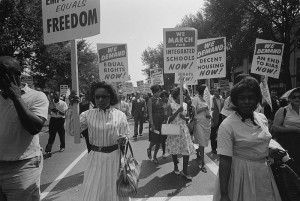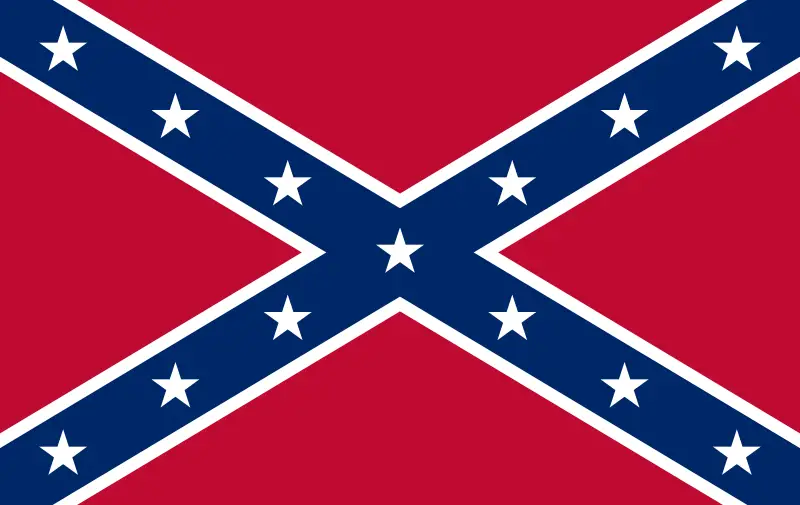 The Civil Rights history taught in grade schools is generally a simplified history that hasn’t been updated, in many places in the United States, for a very long time. Civil Rights and African-American slavery is taught with mostly half-truths, giving the impression that these are atrocities of the past that do not reflect our current society at all. They tend to over-glorify certain figures as heroes, while completely erasing very real, very pivotal moments in time. Here are six myths you may have learned while growing up.
The Civil Rights history taught in grade schools is generally a simplified history that hasn’t been updated, in many places in the United States, for a very long time. Civil Rights and African-American slavery is taught with mostly half-truths, giving the impression that these are atrocities of the past that do not reflect our current society at all. They tend to over-glorify certain figures as heroes, while completely erasing very real, very pivotal moments in time. Here are six myths you may have learned while growing up.
- Abraham Lincoln was Strongly Opposed to Slavery
While Lincoln did in fact manage to free many slaves with the Emancipation Proclamation in 1862, he expressed very conflicting views on abolition throughout his presidency. In an open letter to Horace Greeley addressed to him in the N.Y. Tribune, President Lincoln stated “if I could save the union without freeing any slave, I would do it; and if could save it by freeing all the slaves, I would do it. What I do about Slavery and the colored race, I do because I believe it helps to save this Union.”[i] Lincoln was careful to present himself as a centrist so as not to alienate any pro-slavery Unionist or any abolitionist. While no record is found of Lincoln ever owning slaves (partially because his family couldn’t afford them), he didn’t believe that whites and blacks should have the same political and social rights. In a speech in September of 1885, he stated “I will say then that I am not, nor ever have been, in favor of bringing about in any way the social and political equality of the white and black races”.[ii] He believed that slaves had the right to improve their life conditions, and that slavery was morally wrong, but he didn’t see how they could possibly fit as equals politically.
- Slavery was completely over by 1865
At the end of the Civil War and what has been historically known as the official end of slavery in the US, was not quite the full stop it’s made out to be. Rather than officially owning slaves, states would round up and arrest “newly freed” black people while there was an influx in white and black crime. While there were some white people arrested, about 80-90% of the prisoners were black. These prisoners were then sentenced out to hard labor, called “convict leasing[iii]”, back to the very plantations they had just been freed from.
- Only the South owned slaves
While most of history focuses on Southern slavery, there was still a slavery struggle in the states in the North. There is a record of at least 40,000 slaves in New York; by 1740, at least 1/5 of the population was enslaved.[iv] Slavery in the North was generally different from the South, as it was more industry based and less farm based. The North was still very economically dependent on Southern cash crop production. Even those black slaves who were free in the North still had no rights, especially when it came to property. While the federal government was building up suburbs for white people, black people were forbidden from buying. Instead, they were forced into inner-city apartments that white people were leaving for more expansive areas.[v]
- Segregation ended in 1954 with Brown vs. Board of Education
Brown vs. the Board of Education, the Supreme Court made it illegal for public schools to segregate blacks and whites at the state level. The Civil Rights Act in 1954 ended all state laws requiring segregation, outlawed by the Supreme Court. However, more than 10 years after this happened, 75% of all schools were still segregated. As reported by The New York Times[vi] today, 38% of black people and 43% of Latinos go to schools were less than 10% of their peers are white. While today many people will argue that segregation is voluntary, a creation of income inequality rather than government mandated law (or “de facto”), it has more to do with districting. Since the creation of “white only” neighborhoods, black and white neighborhoods are still fairly prominent. These neighborhoods are only one generation removed from mandated, separated neighborhoods, and to this day they do not have the means to move. On top of this, there are still schools in the south where the government has recently had to step in to desegregate them all over again. Certain Mississippi high schools have long ignored desegregation laws, inviting new law suits to be filed to merge schools together.[vii]
- The Civil Rights Movement began in 1955 with the Montgomery Bus Boycott (Rosa Parks)
Long before 1955, black people had been circulating petitions, bringing court cases and organizing against slavery since before the American Revolution[viii]. In fact, the Civil Rights era for African-American rights started in the early 1800s. A few prominent newspapers such as Freedom’s Journal, run by two black men in 1827 ran editorials against injustices. Scholarly journals in The Chicago Defender (1905), the NAACP’s The Crisis (1910) and others helped spread black news, culture and society.[ix]
- Rosa Parks was the first black woman to stage a sit in on a Montgomery Bus
9 months before Rosa Park’s quite famous arrest, Claudette Colin was arrested[x] for refusing to give up her seat to a white passenger. At just 15, she was physically removed from the bus by police after declaring her Constitutional rights. She was later involved in a court case, Browder vs. Gayle, to challenge bus segregation ordinances in Montgomery. Rosa Parks got attention because she was a better poster child with a “biblical quality” and a “humming Christian light” as James Farmer of the Congress of Racial Equality put it. Her face and her timing contributed to her rise to fame more so than being the first black person to ever challenge a white person on the bus.
Save










Leave a Reply